The human brain is essentially a pattern
recognition device. Pattern recognition is based fundamentally on the detection
by the neural system of ‘similarity’ and ‘difference’ in the patterns of
stimulation received by the prefrontal cortex of the brain. The system of
pattern recognition does not require conscious awareness. However, unless
pattern recognition is linked directly to a reflex response, it does imply that
a prior observation of a significant pattern exists as stored information in
the mind of an observer to which a ‘new’ pattern can be compared.
The ability to be sensitive to your
surroundings (and to the state of your internal environment), the ability to
sense in general, is based on pattern recognition. Sensitivity always results
in an ‘if… then’ situation. Pattern recognition and sensitivity in general are
also based on context; ‘if this occurs…, I last found that…’ The response to
the stimulation, either ‘for’ or ‘against’ the input, is based on reflex action
or on cognition and its concomitant interpretation by the brain. From the
outset, sensitivity in organisms has allowed the evolution of simple forms of
navigation through a hazardous environment and escape behaviours, for example.
With the evolution of more complex brains comes
more complex analysis of the sensory input – this results in pattern processing,
recognition and even pattern synthesis within the brain. Learning of
significant patterns and memory of the patterns is also increased greatly. One
example of this ability by complex brains is the formation of search images of
their prey within the brains of many predator species. By first learning and subsequently recognising specific clues present
in the shape, colouration and behaviour of common prey species, many predators
are able to increase significantly their ability to spot and hunt cryptic prey.
However, by focussing on one prey motif too narrowly, the predator will become
worse at spotting other types of prey. This phenomenon of using pattern
recognition – matching an observed pattern of a specific prey item with a
learned pattern recalled from memory – is referred to as a predator having
formed a search image for a certain prey species.
With ‘consciousness’ come decision-taking,
reasoning, abstract thought and language, intelligence, invention, imagination,
the pondering over the significance of patterns and communication of and about
patterns. It is likely that all of these most human abilities are based in very
large part on the enhanced pattern processing skills of the human brain (more
specifically of the expanded prefrontal cortex present in humans).
As humans, we literally ‘picture’ reality
inside of our minds. With language and sound (again based on pattern
recognition), we hear our thoughts, we hum a tune silently, we converse with
‘our selves’ and others in our minds. With our expanded prefrontal cortex,
superb pattern processing and pattern recognition skills allow humans to encode
and integrate perceived patterns. Moreover, we are able to transfer such
patterns to other individuals via description (using language) and by depiction
in the visual arts. We not only perceive patterns; we also fabricate patterns within
our minds. All patterns, perceived or imagined, are reinforced by familiarity, emotional
experiences, learning, instruction (and even indoctrination). Our emotions (love,
pleasure, anger, fear, for example) are all heightened states of stimulation. Emotional
arousal enhances the memory and recall from memory of events that have occurred
during those particular episodes of emotional experience. Pattern processing
too is heightened by perception of patterns in an emotional setting.
Given a human mind’s phenomenal ability to
process and recognise patterns, it should come as no surprise then that humans,
with their imagination and inventiveness, will actively seek out and identify
patterns in their environment. However, not all of the discoverable patterns
necessarily carry any significance or meaning. Often, patterns are detected
that may at first seem meaningful (such as ‘seeing’ a friend in a crowd of
complete strangers); however, on further analysis, interpretation and reflection,
the pattern is not what it seemed to be at first. The significance, the
meaningfulness of the pattern, has evaporated upon the realisation that we are
experiencing a misrepresentation. Similarly, identifying animal or human
figures in clouds, as star signs in the heavens, as the rabbit in the moon (as
examples), all are instances of the pattern recognition system in our minds
imbuing erroneous meaning to otherwise misrepresented and misidentified
patterns. Then again, our imagination (subjected to our personal convictions
and beliefs) often simply ‘corrects’ current insignificant patterns and
incorporates meaning or overrides non-meaning to give rise to a ‘true’
representation. Human history is replete with reported tales of visions.
Our cognitive ability
to recognise patterns always includes detection of the pattern, a comparison or
matching of the observed pattern with patterns that we have memorised (that is,
patterns that we have experienced and learned before and can recall from our
memory) and finally recognition (identification coupled with making meaning of
the significance of the observed pattern). Thus misidentification can take
place at three levels.
Perhaps the most
obvious (and most easily understood) misrepresentations of reality arise from
the perception of optical phenomena (such as the diffraction, dispersion, reflection
and refraction of light). At the level of observation, we would have to add any
inherent restrictions of our various sensory receptors and organs, such as the
perception of after-images following intense stimulation of the photoreceptors
and the presence of blind spots in the retinas of our eyes.
The second level at
which misidentification can and does take place involves the mechanisms in our
cerebral cortices of pattern processing, analysis and the comparison of newly
sensed patterns with memorised patterns. The new input, the pattern of
stimulation being received by our brain, must be matched against existing
prototypical or template patterns stored in our memories. The initial
comparison and possible matching to recalled patterns may prove to be
sufficient for accurate pattern recognition if there is congruence between the
sensory input and the recall from memory. Alternatively, further analysis of
finer detail in the observed pattern may reveal a correspondence of noteworthy features
shared by the two patterns, rather than a matching of the coarser patterns
overall.
The final level at
which misrepresentation during pattern recognition can take place involves the
assigning of import or meaning to the observed pattern. It is at this level
that our minds become easily influenced (even biased) by prior experience and
learning, by memories and by our current emotional state. (Intoxication by a
whole host of chemical substances plays havoc at this level as well.)
Nevertheless, in a ‘normal’
human brain, none of the misidentifications or misrepresentations that may
arise at any one of the levels constitutes an error – none of these indicates a
flaw in the pattern recognition system. Rather, in humans at least, the
majority of such ‘mistakes’ are connected intimately to our cognition, our
current reasoning, our hopes and beliefs, as well as our imagination.
As a photographer and avid reader of
literature, I prefer to use the term ‘connotation’ when dealing with
photographs that can evoke misrecognition of patterns in the viewer’s mind.
In literature, a particular word may suggest an
additional idea, significance or sentiment that need not be a part of the
word’s original denotation or meaning. Such an additional suggested or implied
meaning is referred to as a word’s ‘connotation’. In works of art, connotation
will evoke in the audience an association or will hint at a relationship to
some object or concept that is not represented directly in the artwork.
Connotation, then, inspires, suggests, implies, implicates notions that hint at
additional possibilities of significance and meaningfulness that are otherwise
left unexpressed in the work of art itself.
At a fundamental level, our enhanced human
ability at and propensity for pattern recognition, together with our
imagination and susceptibility to misrecognition of patterns, are precisely the
phenomena that an artist will exploit during composition of an image.
Composition involves the deliberate arrangement of visual elements to support and
augment the subject (in the broadest sense) and the meaning assigned to it by
the visual artist, while de-emphasising and negating the influence on our
perception and the significance to our mind of the extraneous surroundings.
Therefore, composition is the meticulous, intended manipulation by the artist of
the pattern recognition abilities that all humans enjoy.

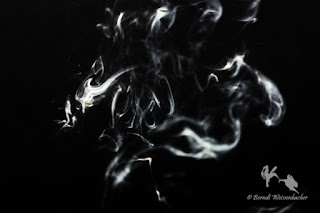

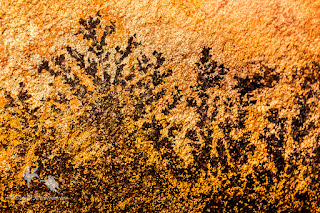
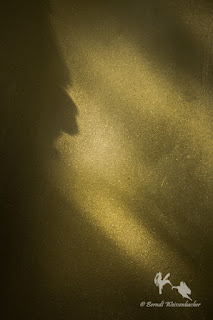
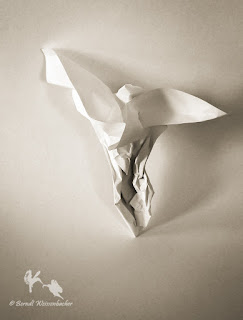
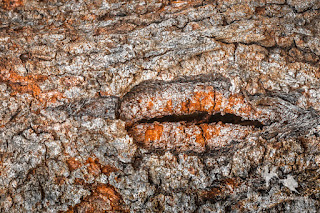



No comments:
Post a Comment